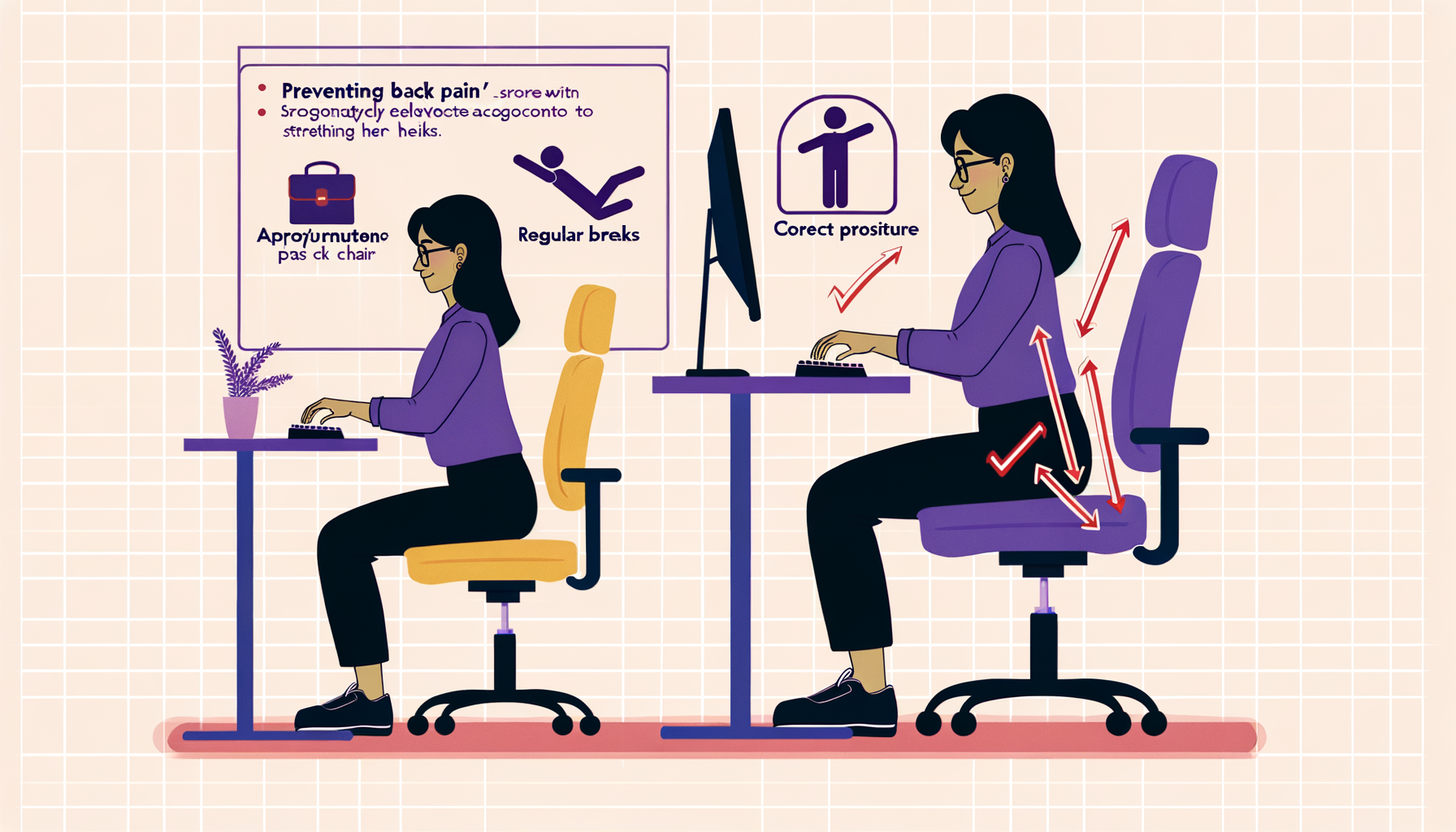
10 Proven Strategies for Preventing Back Pain for Developers in 2024
As a developer, I know the struggle of sitting for hours on end, hunched over a keyboard. Did you know that 80% of programmers experience back pain at some point in their careers? Yikes! But don’t worry, I’ve got your back (pun intended)! In this guide, we’ll explore practical ways to prevent back pain and keep you coding comfortably. Let’s dive in and save your spine!
Understanding the Root Causes of Back Pain for Developers
Let’s face it, developers spend a lot of time in front of their computers. It’s no wonder that back pain is such a common issue in our profession. But what’s really causing all this discomfort?
First off, we have the culprit of prolonged sitting and poor posture. We’ve all been there, hunched over our keyboards for hours on end, completely engrossed in our code. It’s easy to forget about our posture when we’re in the zone, but our backs certainly don’t forget!
Then there’s the issue of repetitive movements and strain. Whether it’s typing away at our keyboards or constantly reaching for our mouse, these small movements can add up over time and cause some serious strain on our muscles and joints.
And let’s not forget about the lack of physical activity. When we’re deep into a project, it’s all too easy to forget to get up and move around. But our bodies need that movement to stay healthy and pain-free.
Lastly, an improper workstation setup can be a major contributor to back pain. If your desk, chair, or computer setup isn’t ergonomically optimized, you could be setting yourself up for discomfort without even realizing it.
Ergonomic Workstation Essentials
Now that we understand what’s causing our back pain, let’s talk about how to set up our workstations to prevent it.
First things first: your chair and desk. These are the foundation of your workstation, so it’s crucial to choose ones that provide proper support and are adjustable to your needs. A good ergonomic chair should support your lower back and promote good posture.
Next up is monitor positioning. Your screen should be at eye level to prevent neck strain. If you’re using a laptop, consider investing in a separate monitor or a laptop stand to achieve the right height.
Don’t forget about your keyboard and mouse! These should be positioned so that your arms are at a 90-degree angle when typing. An ergonomic keyboard and mouse can also help reduce strain on your wrists and hands.
Remember, the key to a good ergonomic setup is adjustability. Everyone’s body is different, so having equipment that you can adjust to your specific needs is crucial.
Maintaining Proper Posture While Coding
Alright, so you’ve got your ergonomic workstation set up. Now, let’s talk about how to actually sit in it!
The correct sitting position is with your feet flat on the floor, your knees at a 90-degree angle, and your back straight against the chair. Your arms should be at a 90-degree angle when typing, and your wrists should be straight.
Pay attention to your neck and shoulder alignment too. Your shoulders should be relaxed, not hunched up towards your ears. Your neck should be in a neutral position, not craned forward towards your screen.
If you’re having trouble maintaining good posture, there are some posture-correcting devices out there that can help. Things like lumbar support cushions or wearable posture sensors can give you a gentle reminder when you start to slouch.
Incorporating Movement into Your Workday
Now, even with perfect posture, sitting all day isn’t great for your back. That’s why it’s important to incorporate movement into your workday.
One popular method is the Pomodoro Technique, where you work for 25 minutes and then take a 5-minute break. During those breaks, stand up, stretch, or do some quick desk exercises.
Standing desks are another great option. They allow you to alternate between sitting and standing throughout the day, giving your back a break from constant sitting.
And hey, why not take your coding on the go sometimes? Walking meetings or mobile coding sessions (when possible) can be a great way to get some movement in while still being productive.
Strengthening Exercises for Developers
Of course, prevention isn’t just about how you sit at your desk. Strengthening the muscles that support your back can go a long way in preventing pain.
Core-strengthening routines are particularly important. A strong core helps support your spine and improve your posture. Planks, crunches, and bicycle kicks are all great exercises to try.
Don’t forget about your back and shoulder muscles either. Exercises like rows, pull-ups, and shoulder presses can help strengthen these areas.
Yoga can be particularly beneficial for programmers. Many yoga poses focus on improving flexibility and strength in the back and core.
And if you’re looking for something you can do at your desk, resistance band workouts are a great option. They’re portable, versatile, and effective for strengthening various muscle groups.
Conclusion
There you have it, fellow coders! By implementing these strategies, you’ll be well on your way to a pain-free coding experience. Remember, prevention is key, and small changes can make a big difference. So, stand up, stretch, and give your back the love it deserves. Your future self (and spine) will thank you. Now, go forth and code comfortably!